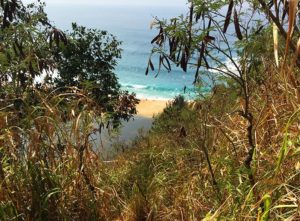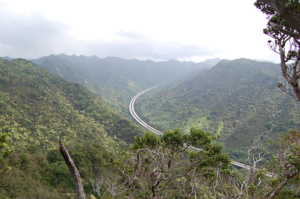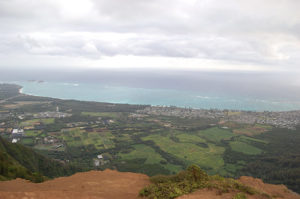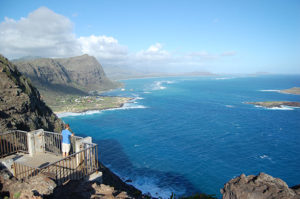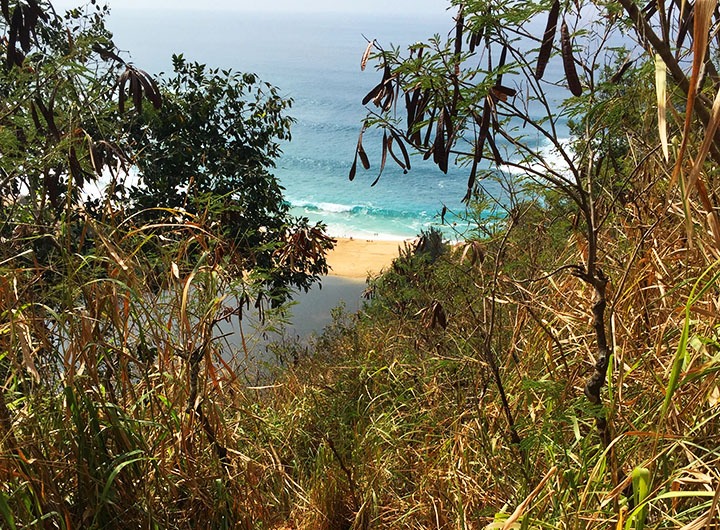
Photo: Rasa Fournier.
Heading to lush and lovely Pupukea’s forested hills on Oahu’s North Shore, my husband suggests that we make a detour. Waimea’s massive waves are going off, and he knows a nearby heiau or traditional Hawaiian temple that overlooks the bay.
“A heiau in Pupukea?” I ask, perking up.
Puu O Mahuka Heiau
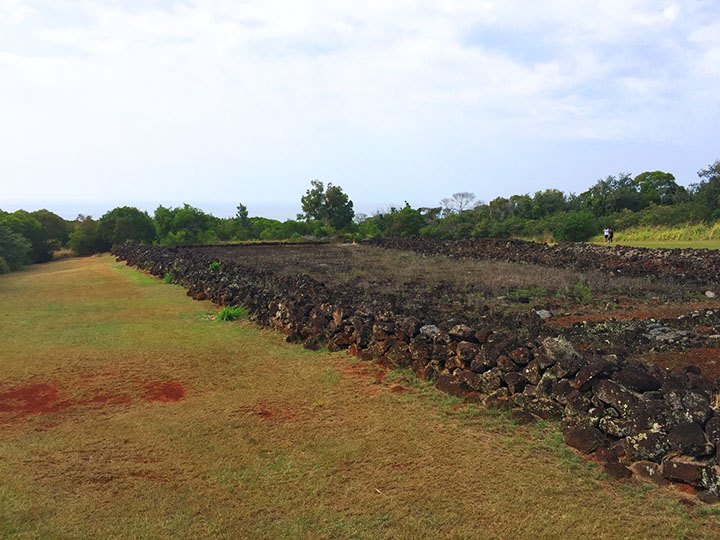
Photo: Rasa Fournier.
I’ve been camping in the area since I was a kid, I’ve hiked out here often, and I’ve sent my kids to camp out here. Yet I’ve never heard of Pu’u O Mahuka Heiau. We arrive at a promontory and I gasp. Spread out in front of me as far as my eyes can see is a rectangular rock wall — remnant foundational stones of the island’s largest heiau, spilled over in disarray, as ruins are wont to do. Along these stone ledges, the people of Hawaii once gathered in attendance of rituals that included human sacrifice.
A posted plaque officially labels the place a national historic landmark. Descriptive boards depict a likeness of the village 250 years ago, with a central tower for communication between god and ali’i or chief, an area where offerings were placed, and others for housing sacred drums, water, fire, an altar and sacred objects. The area’s fresh waters, fertile soil, teeming ocean and shoreline characteristics conducive to surfing and canoeing, attracted the island’s chiefs to spend time in this Waimea ahupuaʻa or land division.
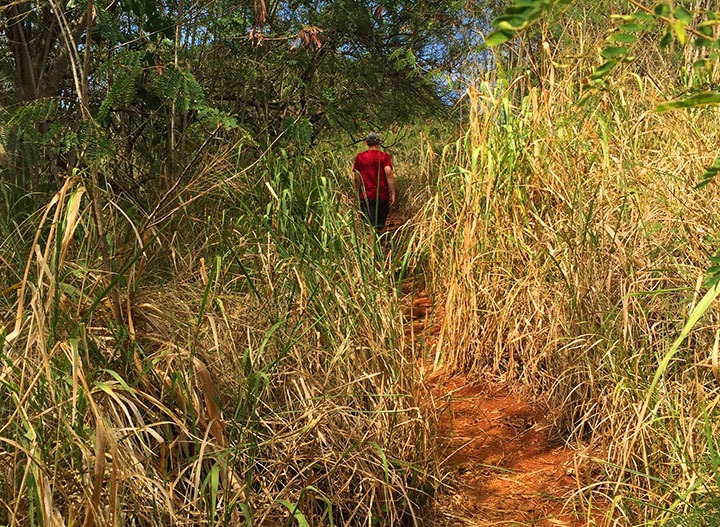
Photo: Rasa Fournier.
Ceremony prospered here throughout the 1700s, but the heiau fell into disuse at the turn of the 1800s, with the arrival of missionaries. Today, I stand transfixed by this rectangle tattooed into the land and by the scattered rocks that make up its inner labyrinth, and by thoughts of the cultural activities that once prospered in this now quiet, conspicuously empty spot.
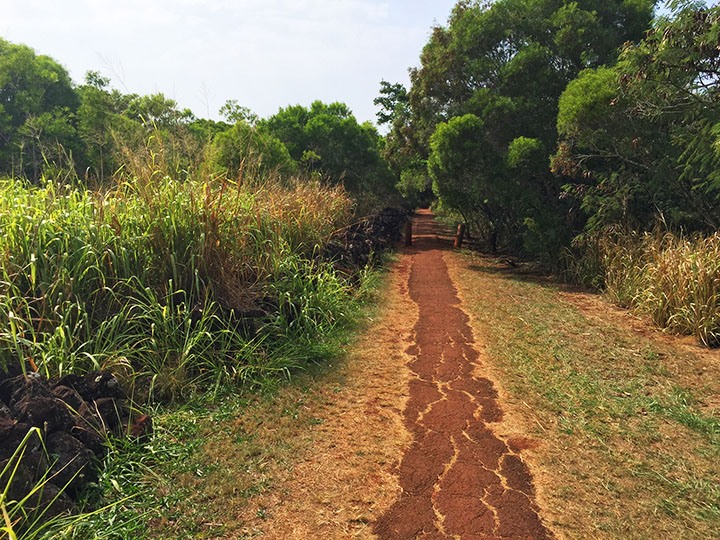
Photo: Rasa Fournier.
A cement path runs parallel to the the western wall of the structure, extending toward the ocean. I follow it into high grass and am amazed to see the wall continuing well further than expected.
Views of Waimea Bay
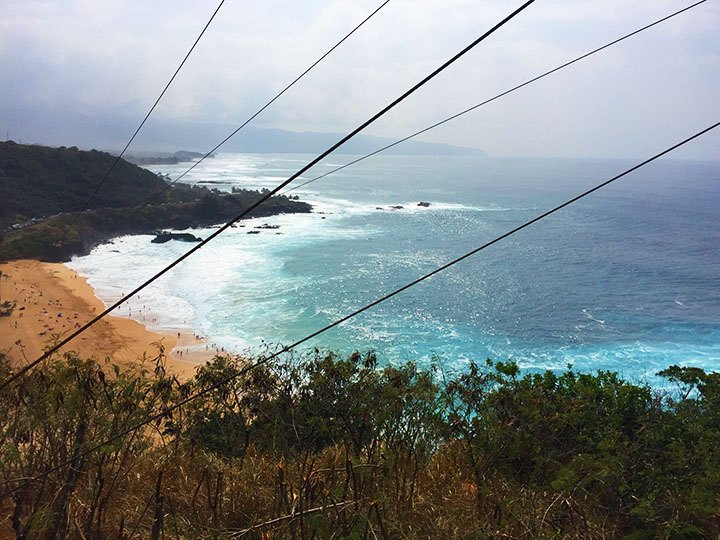
Photo: Rasa Fournier.
The path takes me to an outlook with VIP views of one of nature’s most spectacular, big wave arenas. Walking with the heiau to my left, the ocean to my right, I catch a series of overlooks sporting impossible visions of blue sky, blue water beauty. Waimea winds whoosh over me, caressing me into a pensive lull. Gazing out at that historic bay, a shiver run up my spine. Behind me is a place of legend and before me, one of the world’s most legendary surf breaks. An area of peace and tumult, waves and worship, past connecting with present.
“Worship,” I whisper to the breeze, as I complete my circumambulation of the heiau — leftover veins that map the earth, hinting at the majesty that once coursed through this land. Down below, now out of sight, mammoth waves pound their sacred drumbeat against the sand.
TRAIL: Puu O Mahuka Heiau
LENGTH: half-mile loop
HOW TO GET THERE: From Waikiki, get on H-1 heading west. Continue as it merges with H-201. Take the H-2 exit heading north and continue onto HI-99 (Kamehameha Highway), and veer right onto HI-83 (still Kamehameha Highway). Make a right onto Pupukea Road, and turn again onto the first street on your right, Puu O Mahuka. The street dead-ends at the heiau.

